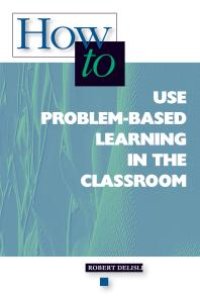
Ebook: How to Use Problem-Based Learning in the Classroom
Author: Robert Delisle
- Tags: Problem-based learning., Active learning., EDU000000, EDU029000, EDU046000
- Year: 1997
- Publisher: Association for Supervision & Curriculum Development
- City: Alexandria, United States
- Edition: 1
- Language: English
- pdf
Engaging and motivating students--especially the least motivated learners--is a daily challenge. But with the process of problem-based learning (PBL), any teacher can create an exciting, active classroom where students themselves eagerly build problem-solving skills while learning the content necessary to apply them. With problem-based learning, students' work begins with an ill-defined problem. Key to this problem is how it explicitly links something important in students' daily lives to the classroom. This motivational feature is vital as students define the what, where, and how of resolving the problem situation. Problem-based learning may sound potentially chaotic and haphazard, but it rests on the firm foundation of a teacher's work behind the scenes. The teacher develops a problem long before students see it, specifically choosing the skills and content the problem will emphasize and matching those to curriculum and standards. Though a PBL problem will have no "right" answer, the teacher structures the experience so that specific learning takes place as students generate the problem-solving steps, research issues, and produce a final product. The teacher guides without leading, assists without directing. Note: This product listing is for the Adobe Acrobat (PDF) version of the book.
Download the book How to Use Problem-Based Learning in the Classroom for free or read online
Continue reading on any device:

Last viewed books
Related books
{related-news}
Comments (0)